
Appleton is a heavily eroded lunar impact crater that lies in the northern hemisphere on the far side of the Moon. To the northwest are the craters Von Neumann and Campbel. The smaller Golovin lies to the northeast, while further to the southwest is the Mare Moscoviense.

Artamonov is a lunar impact crater on the far side of the Moon. Its eroded outer rim does not have the circular shape of most lunar craters, but the overall shape of three or four merged craters. The largest is in the south, with smaller circular bulges to the north and east.

Fechner is a lunar impact crater that lies on the far side of the Moon's southern hemisphere, attached to the western rim of the large walled plain Planck. The eastern rim of Fechner intersects the Vallis Planck, a long, wide cleft in the surface that follows a course to the north-northwest. This valley intrudes into the southeastern rim of the crater, then continues northwards from the periphery of the northeast rim.

Fabry is a large lunar impact crater of the form termed a walled plain. It is located on the far side of the Moon, just beyond the northeastern limb. Parts of this area are sometimes brought into view by the effects of libration, but the terrain is seen from the edge and so not much in the way of detail can be observed.
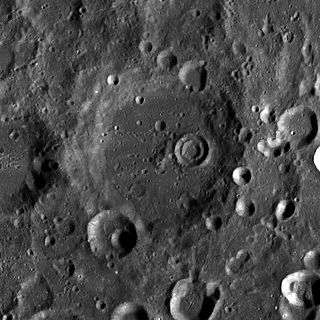
Bell is a lunar impact crater that is located on the far side of the Moon, just past the western limb. It lies in an area of terrain that is marked by many small craters, a number of which are satellite craters of Bell listed in the table below. Bell lies within two crater diameters of Laue to the north, and to the west of the smaller Helberg.

H. G. Wells is a lunar impact crater that is located on the far side of the Moon, behind the northeastern limb. It lies to the south of the crater Millikan, and to the northeast of Cantor. Just to the southeast is the smaller Tesla.

Campbell is a large lunar impact crater that is located in the northern hemisphere on the far side of the Moon. It lies to the southwest of the walled plain D'Alembert, an even larger formation. If Campbell were located on the near side of the Moon as seen from the Earth, it would form one of the largest visible craters, being slightly larger than Schickard. It is bordered by several craters of note, with Wiener to the southwest, Von Neumann just to the south, Ley overlying the southeast rim, and Pawsey to the west.

Carnot is a large crater in the northern part of the Moon's far side. It was named after Nicolas L. S. Carnot by the IAU in 1970.

Chapman is a lunar impact crater that lies just beyond the northwest rim of the Moon, on the far side as seen from the Earth. It lies to the northeast of the crater Rynin, and southward of the large walled plain Poczobutt.

Chappell is a lunar impact crater on the far side of the Moon, in the northern hemisphere just to the north of the crater Debye. It is in a heavily bombarded section of the surface, and much of its outer rim is overlain by smaller craters. The northern rim in particular has been almost completely disintegrated, while small craters also overlie the rim to the northwest and southeast. What remains of the rim forms a rounded, somewhat irregular edge to the crater depression.

Chevallier is a lunar impact crater that is located in the northeastern part of the Moon's near side, about a crater diameter east-southeast of the prominent crater Atlas. To the south-southeast of Chevallier is the flooded crater Shuckburgh. Chevallier was named by the IAU in 1935.
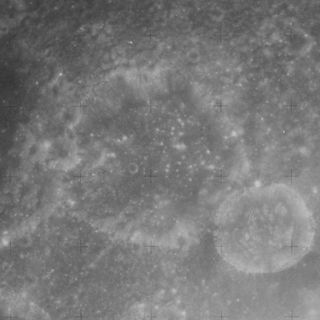
Jenkins is a lunar impact crater that lies along the equator of the Moon, near the eastern limb. It is attached to the eastern rim of the slightly larger crater Schubert X, intruding somewhat into the interior. The crater Nobili is likewise attached to the western rim of Schubert X and intrudes slightly into the interior on that side. The three craters form a linear chain along the equator.
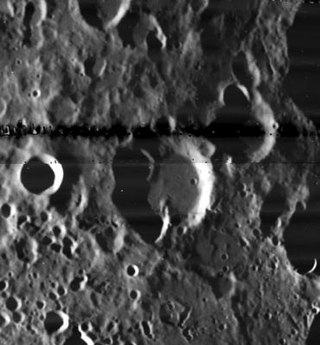
Douglass is a lunar impact crater on the far side of the Moon. It lies to the southwest of the crater Frost and south-southwest of the large walled plain Landau.
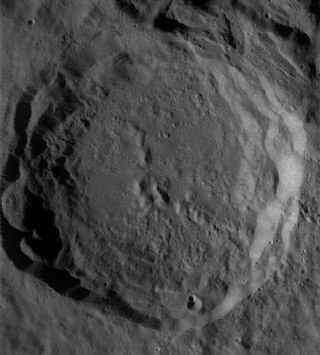
Von Neumann is a lunar impact crater that lies on the far side of the Moon, in the northern hemisphere, named after polymath John von Neumann. It is nearly attached to the south-southeastern rim of the walled plain Campbell. The crater Ley is attached to the northeastern rim of Von Neumann, and is somewhat overlain by the outer rampart. To the west is the prominent Wiener, and to the south-southwest is Nikolayev.

Danjon is a lunar impact crater on the far side of the Moon. It lies less than a crater diameter to the east-southeast of the larger crater Langemak. To the east-northeast of Danjon is the crater Perepelkin, and due south lies the walled plain Fermi.

Fleming is a large lunar impact crater that is located on the Moon's far side, and cannot be seen from the Earth. It lies about a crater diameter to the east-northeast of Hertz, and to the northwest of Lobachevskiy.

Fowler is a large lunar impact crater that lies in the northern hemisphere on the Moon's far side. It lies to the south-southwest of the crater Esnault-Pelterie, and north of Gadomski. Overlying the eastern rim and intruding into the interior is Von Zeipel.
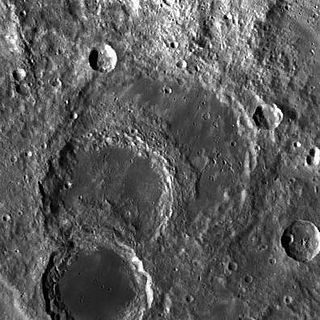
Richardson is a large lunar impact crater located on the Moon's far side, just behind the eastern limb. It lies to the south of the huge walled plain Harkhebi, and to the east-southeast of the crater Vestine. Just to the northeast is Szilard, and to the southeast is Artamonov.

Wood is a lunar impact crater that lies entirely within the interior of the much larger walled plain Landau, on the far side of Moon. Wood is situated along the northwestern part of the floor of Landau, and shares a common northwestern rim with the larger impact. The inner wall of the northwest rim extends inward about halfway toward the crater midpoint, where there is a central peak. The rim of Wood is somewhat worn and uneven, with a small crater laid across the southwest section. The surviving interior floor is nearly level and is marked only by a few small craters.

Sternfeld is a lunar impact crater on the far side of the Moon. It lies to the south-southwest of the crater Paschen, and to the east-southeast of the smaller Lodygin.




















